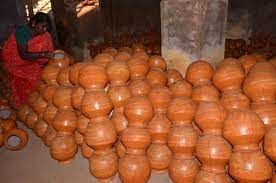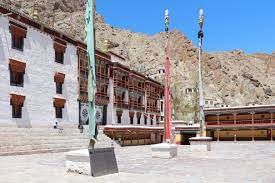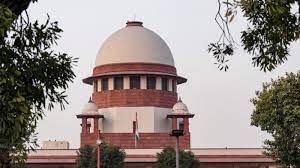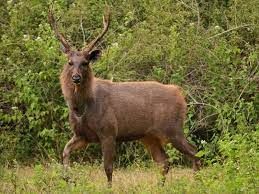UPSC Daily Current Affairs- 28th April 2023 | Current Affairs & Hindu Analysis: Daily, Weekly & Monthly PDF Download
GS-I
Manamadurai pottery
Why in News?
Recently, Tamil Nadu’s Manamadurai pottery got a GI tag.
About Manamadurai Pottery:-
- Manamadurai, a small village in the Sivagangai district of Tamil Nadu, is known for its pottery making.
- The tradition has been passed down from generation to generation, and today, Manamadurai pottery is recognized worldwide for its unique style and craftsmanship.
- The main raw material used for making Manamadurai pottery is mud.
- The clay used for the pottery is enriched by the Vaigai River which runs through the village.
- The Vaigai River contributes to the quality of the clay used in the pottery, making it ideal for the process.
- The making of Manamadurai pottery involves the use of the five elements of nature, namely, earth, water, fire, air, and space.
- These elements are believed to give the pots a unique quality that cannot be replicated by modern machinery.
- To improve the quality of the pottery, sand is added to the clay mixture.
- Lead, graphite, calcium lime, ash, red lead, sodium silicate, manganese, iron, and plasticizing are added to the mixture to make the pottery strong.
- Pot making requires expertise and is one of the most critical factors in proportion.
- The bottom of the pot has to be perfectly round, and the circumference of the pot and the neck should be proportionate.
Source: The Hindu
Hemis Monastery
Why in News?
Recently, delegates of G20 visited the Hemis Monastery in Leh and also witnessed the famous Cham dance.
About Hemis Monastery:
- It is a Buddhist monastery located in Leh City,
- It belongs to the Drukpa lineage of Buddhism.
- The monastery was first established in the 11th century and later re-established in the 17th century by the Ladakhi King Sengge Namgyal.
- It is also famous for its 2-day religious ceremony known as the Hemis Festival.
- This festival is celebrated in honour of Padmasambhava which is observed here in
- It is the biggest and very richly endowed monastery.
Key Facts about the Drukpa Lineage Buddhism
- It was founded in the 12th century by Gyalwa Gotsangpa, a disciple of the famous Tibetan master Phagmo Drupa.
- It is particularly prominent in Bhutan.
- This is known for its efforts to empower women, and their nuns are allowed to receive the same level of training and education as their male counterparts.
Source: Times of India
GS-II
Policy for the Medical Devices Sector

Why in News?
The Union Cabinet has approved the policy for the medical devices sector and six strategies have been planned to tap the potential of the sector with the implementation action plan.
Medical Device Sector in India
- The current market size of the medical devices industry in India is estimated at $11 bn (approximately, ? 90,000 Cr) in 2020 and its share in the global medical device market is estimated to be 1.65%.
- India is the 4th largest Asian medical devices market after Japan, China, and South Korea, and among the top 20 medical devices markets globally.
- The medical devices industry in India consists of large multinationals as well as small and medium enterprises (SMEs) growing at an unprecedented scale.
- It was recognized as a Sunrise Sector of India under Make in India Campaign of 2014.
Need for the Policy
- Sunrise Sector: The medical devices sector in India is a sunrise sector which is growing at a fast pace. Building upon these measures, a holistic policy framework to accelerate this growth and fulfil the potential of the sector is the need of the hour.
- Universal Healthcare: The Indian medical devices sector is on a growth track and has an enormous potential to become self-reliant and to contribute towards the goal of universal health care.
- The Indian medical devices sector’s contribution has become even more prominent as India supported the domestic and global battle against COVID-19 pandemic through the large scale production of medical devices & diagnostic kits.
- Orderly Growth: The National Medical Devices Policy, 2023 is expected to facilitate an orderly growth of the medical device sector to meet the public health objectives of access, affordability, quality and innovation.
- While various Departments of the Government have undertaken programmatic interventions to encourage the sector, the current policy aims to put in place a comprehensive set of focus areas for growth of the sector in a coordinated manner.
- Encouraging domestic investments and production of medical devices complements the Government’s ‘Atmanirbhar Bharat’ and ‘Make in India’ programs.
Salient Features of National Medical Devices Policy, 2023
- Vision: To provide an accelerated growth path with a patient-centric approach and to emerge as the global leader in the manufacturing and innovation of medical devices by achieving 10-12% share in the expanding global market over the next 25 years.
- Policy is expected to help the Medical Devices Sector grow from present $11 Bn to $50 Bn by 2030.
- Mission: Policy lays down a roadmap for accelerated growth of the medical devices sector to achieve the following missions viz, Access & Universality, Affordability, Quality, Patient Centred & Quality Care, Preventive & Promotive Health, Security, Research and Innovation and Skilled manpower.
- Strategies to Promote Medical Device Sector: Strategies that will cover six broad areas of policy interventions:
- Regulatory Streamlining: To enhance ease of doing research and business a Single Window Clearance System' for Licensing of Medical Devices co opting all the stakeholder departments / organizations, enhancing the Role of Indian Standards and designing a coherent pricing regulation, will be followed.
- Enabling Infrastructure: The establishment and strengthening of large medical device parks, clusters equipped with world class common infrastructure facilities in proximity to economic zones would be pursued with the State Governments and Industry for better convergence and backward integration with medical device Industry.
- Facilitating R&D and Innovation: The policy envisages to promote Research & Development in India and complement the Department’s proposed National Policy on R&D and Innovation in the Pharma- MedTech Sector. It also aims at establishing Centres of Excellence in academic and research institutions, innovation hubs, ‘plug and play’ infrastructures and support to start-ups.
- Attracting Investments in the Sector: Along with recent schemes and interventions like Make in India, Ayushman Bharat program, Heal-in-India, Start-up mission, the policy encourages private investments, series of funding from Venture Capitalists, and also Public-Private Partnership(PPP).
- Human Resources Development: The policy envisages:
- Leverage the available resources in Ministry of Skill Development and Entrepreneurship for skilling, reskilling and upskilling of professionals in the medical device sector,
- The policy will support dedicated multidisciplinary courses for medical devices in existing institutions and to meet the evolving needs of the Sector,
- To develop partnerships with foreign academic/industry organizations to develop medical technologies in order to be in equal pace with the world market.
- Brand Positioning and Awareness Creation: Creation of a dedicated Export Promotion Council for the sector under the Department which will be an enabler to deal with various market access issues:
- Initiate studies and projects for learning from best global practices of manufacturing and skilling systems so as to explore the feasibility of adapting such successful models in India.
- Promote more forums to bring together various stakeholders for sharing knowledge and build strong networks across the sector.
Steps Taken by Government of India to ensure the growth of the sector
- Production Linked Incentives: Government has launched Production Linked Incentive Schemes for medical devices with financial incentives worth $456 mn to boost domestic production.
- Development of Medical Devices Parks: New Medical Devices Parks upcoming in Himachal Pradesh, Uttar Pradesh, Madhya Pradesh, & Tamil Nadu to create a robust ecosystem for medical device manufacturing.
- Policy Support: Release of National Medical Devices Policy to enable strong collaborations for boosting medical devices ecosystem & National R&D Policy to foster interdisciplinary collaborations to develop translational skills & start-up ecosystem.
Source: PIB
United Nations Permanent Forum on Indigenous Issues (UNPFII)
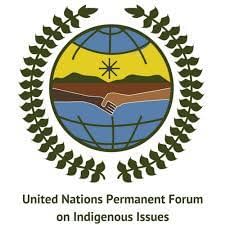
Why in News?
Recently, the 22nd session of the United Nations Permanent Forum on Indigenous Issues was held in New York.
About UNPFII:
- It is a high-level advisory body to the Economic and Social Council.
- It was established on 28 July 2000.
- Mandate:To deal with indigenous issues related to economic and social development, culture, the environment, education, health and human rights.
- The first meeting of the Permanent Forum was held in May 2002, with yearly sessions thereafter.
- It is one of three UN bodies that is mandated to deal specifically with indigenous peoples’ issues.
- The others are the Expert Mechanism on the Rights of Indigenous Peoplesand the Special Rapporteur on the Rights of indigenous peoples.
Who are Indigenous Peoples?
- Indigenous peoples have in common a historical continuity with a given region before colonization and a strong link to their lands.
- They maintain, at least in part, distinct social, economic and political systems.
- They have distinct languages, cultures, beliefs and knowledge systems.
- They are determined to maintain and develop their identity and distinct institutions and they form a non-dominant sector of society.
Source: Down To Earth
GS-III
SC’s Modified Judgment on Eco-sensitive Zones
Why in News?
The Supreme Court has recently modified its judgment to have mandatory eco-sensitive zones (ESZ) around protected forests.
More about the news
- The previous judgment of SC:
- On June 3, 2022, the apex court had ordered the 1-km buffer zone for protected areas to act as a “shock absorber”.
- Its judgment was to have mandatory eco-sensitive zones (ESZ) of a minimum one kilometre around protected forests, national parks and wildlife sanctuaries across the country.
- Issue:
- However, the Centre and several States, including Kerala, had returned to the apex court seeking modification of the June 2022 judgment, saying the judicial direction affected hundreds of villages in the peripheries of forests.
- Apex court’s opinion:
- Agreeing, the court said “the purpose of declaring ESZs is not to hamper the day-to-day activities of the citizens. If the direction as issued is continued, it would certainly hamper the day-to-day activities of the citizens residing in ESZs. As such, we find that the direction needs to be modified”.
- Modified judgment:
- SC Bench reasoned that ESZ cannot be uniform across the country and has to be “protected area-specific”.
- The court said a stringent observance of the June 2022 judgment would cause more harm than good. For one, man-animal conflict would only increase rather than abate.
Eco Sensitive Zone (ESZ)
- The Eco-Sensitive Zone (ESZ) are areas in India notified by the Ministry of Environment, Forest and Climate Change (MoEFCC), GoI around Protected Areas, National Park and Wildlife sanctuaries.
- Range:
- All identified areas around Protected Areas and wildlife corridors to be declared as ecologically fragile under the Environment (Protection) Act, 1986 (National Wildlife Action Plan, 2002-2016).
- Eco-sensitive zones could go up to 10 Kms around Protected Areas.
- In cases where sensitive corridors, connectivity and ecologically important patches, crucial for landscape linkage, are even beyond 10 Kms width.
- Further, Eco-sensitive zones may not be uniform all around and it could be variable in width and extent.
- Prohibited activities:
- Activities like industries that cause pollution Commercial mining, saw mills, establishment of major hydroelectric projects (HEP), commercial use of wood, Tourism, discharge of effluents or any solid waste or production of hazardous substances are all prohibited.
- Regulated activities:
- Activities like felling of trees, establishment of hotels and resorts, commercial use of natural water, erection of electrical cables, drastic change of agriculture system, e.g. adoption of heavy technology, pesticides etc., widening of roads.
- Permitted activities:
- Activities like ongoing agricultural or horticultural practices, rainwater harvesting, organic farming, use of renewable energy sources, adoption of green technology for all activities are permitted.
Significance of Eco Sensitive Zone (ESZ)
- Conservation:
- ESZs help in in-situ conservation, which deals with conservation of an endangered species in its natural habitat.
- For example, the conservation of the One-horned Rhino of Kaziranga National Park, Assam.
- They minimize forest depletion and man-animal conflict.
- ESZs help in in-situ conservation, which deals with conservation of an endangered species in its natural habitat.
- Buffer zone:
- The protected areas are based on the core and buffer model of management, through which local area communities are also protected and benefitted.
- ESZs are created as “shock absorbers” for the protected areas, to minimize the negative impact on the “fragile ecosystems” by certain human activities taking place nearby.
- These areas are meant to act as a transition zone from areas requiring higher protection to those requiring lesser protection.
- Mitigating climate change:
- Biodiversity and climate change are interconnected. Creation of SEZs may help in reducing the rise in temperature.
- Significance of Recent Judgment:
- It can lead to more sustainable development.
- Tribal rights will also be protected with the recent judgment i.e., their culture, diversity etc will be preserved.
Criticisms
- Doubts on the methods used:
- The order is criticised for not using a scientific basis for the declaration.
- According to experts, an ESZ should only be declared evolved through participatory planning exercises.
- Settlements around protected areas:
- One km area around PA is likely to have low-income housing colonies, historical monuments and livelihood use areas like river floodplains.
- In the case of Kerala, there is a high density of human population near the notified protected areas.
- One km area around PA is likely to have low-income housing colonies, historical monuments and livelihood use areas like river floodplains.
- Topographical differences:
- There are several habitat types like mountains, grasslands, forests, oceans. But the order does not mention that.
- In case of Sundarbans, the whole area is eco-sensitive. It is difficult to enforce a 1 km boundary in marine space that is interconnected.
- The destruction of nature in the name of development cannot be allowed to continue.
- There are several habitat types like mountains, grasslands, forests, oceans. But the order does not mention that.
Way Ahead
- The declaration of protected areas should be a participatory planning process.
- The Centre needs to come up with a plan to incentivise farmers for sticking to green practices in Eco-Sensitive Zones (ESZs).
- Communities living around Protected Areas in several states should promote the conservation of Eco-Sensitive Zones (ESZs).
Source: Indian Express
Quasars
Why in News?
The collision of two galaxies likely ignites quasars, the new study published in journal Monthly Notices of the Royal Astronomical Society highlighted.
- The collisions were discovered when researchers, using deep imaging observations from the Isaac Newton Telescope in La Palma.
What are Quasars?
- A quasar (also known as a QSO or quasi-stellar object) is an extremely luminous active galactic nucleus (AGN).
- Quasars were first discovered six decades ago. They are located in supermassive black holes, which sit in the centre of galaxies.
- As a supermassive black hole feeds on gas and dust, it releases extraordinary amounts of energy in the form of radiation, resulting in a quasar.
- Black hole is a point in space where matter is so compressed as to create a gravity field from which even light cannot escape.
What does the study say about Quasars?
- Quasars are a consequence of galaxies crashing together: Most galaxies have supermassive black holes at their centers. They also contain substantial amounts of gas—but most of the time this gas is orbiting at large distances from the galaxy centers, out of reach of the black holes.
- Collisions between galaxies drive the gas towards the black hole at the galaxy center; just before the gas is consumed by the black hole, it releases extraordinary amounts of energy in the form of radiation, resulting in the characteristic quasar brilliance.
- Future Prospects of Galaxies: The ignition of a quasar can have dramatic consequences for entire galaxies—it can drive the rest of the gas out of the galaxy, which prevents it from forming new stars for billions of years into the future.
- It is likely to represent the future of our own Milky Way galaxy when it collides with the Andromeda galaxy in about five billion years.
Significance of quasars
- Quasars play a key role in our understanding of the history of the universe, and possibly also the future of the Milky Way.
- Quasars act as “cosmic lighthouses”, allowing researchers to see the outer reaches of the universe.
- NASA’s James Webb Space Telescope will study the earliest galaxies in the universe. The telescope is capable of detecting light from even the most distant quasars, emitted nearly 13 billion years ago.
Source: Down To Earth
Sukhna wildlife sanctuary
Why in News?
The recent judgment of the Supreme Court modifying its June 2022 order related to the eco-sensitive zone (ESZ) will help the Haryana and Punjab Forest departments, which are firm to declare only 100 metres as ESZ of the Sukhna Wildlife Sanctuary.
About Sukhna wildlife sanctuary
- It is located in the Chandigarh Union Territory.
- It forms the part of Sukhna Lake catchment area falling in Shivalik hills.
- Fauna: Sambar deer, Barking deer, and wild boar, as well as several species of birds, reptiles, and amphibians.
- Flora: The sanctuary is characterized by a mix of forests, grasslands, and wetlands, with the Sukhna Lake forming an important part of the ecosystem.
Key Facts about Shivalik Hills
- It is also called Siwalik Range or Outer Himalayas.
- It extends for more than 1,000 miles (1,600 km).
- It has an average elevation of 3,000 to 4,000 feet (900 to 1,200 metres).
- It rises abruptly from the plain of the Indus and Ganges (Ganga) rivers (south) and parallels the main range of the Himalayas (north), from which it is separated by valleys.
Source: Indian Express
Left Wing Extremism(LWE) Situation in India
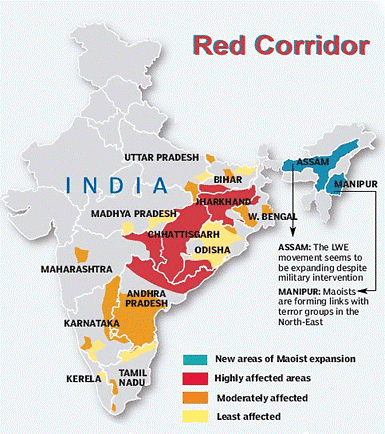
Why in News?
Ten personnel of the Chhattisgarh Police’s District Reserve Guard (DRG) were reported killed in an IED attack by Maoists in the state’s Dantewada district.
Reasons for recent attacks
- The timing of the attack fits with the Maoist strategy of heightened military activity and more attacks on security forces every summer.
- The CPI(Maoist) carries out Tactical Counter Offensive Campaigns (TCOCs) between February and June every year, in which the focus of its military wing is to inflict casualties on security forces.
- This period is chosen because, with the onset of the monsoon in July, it becomes difficult to conduct offensive operations in the jungles.
- There are overflowing nullahs that can’t be crossed.
- There is tall grass and shrubs everywhere, which reduces visibility.
- With the onset of the monsoon, both the Maoists and the security forces return to their camps
LWE situation in the country
- Background: Left-wing extremists, popularly known as Maoists worldwide and as Naxalites/Naxalism in India, have been a major threat to India since the 1960s.
- The term Naxalism derives from the name of the Naxalbari village in West Bengal where a peasant revolt took place against local landlords over a land dispute in 1967.
- Ideology: The Maoist insurgency doctrine glorifies violence as the primary means to overwhelm the existing socio-economic and political structures
- The CPI (Maoist) Party, is the major Left Wing Extremist outfit responsible for a majority of incidents of violence and killing of civilians and security forces.
- the main LWE outfit in India aims to overthrow the existing democratic state structure with violence as their primary weapon, and mass mobilization and strategic united fronts as complementary components and plans to usher in the so-called ‘New Democratic Revolution’ in India.
- Affected Areas
- The presence of Naxals is said to be minimal to zero in Andhra Pradesh, Telangana, Odisha, Jharkhand, and Bihar, which were at one time their strongholds.
- Chhattisgarh is the only state in the country where Maoists continue to have a significant presence and retain the capability to mount big attacks.
- The presence of Naxals is said to be minimal to zero in Andhra Pradesh, Telangana, Odisha, Jharkhand, and Bihar, which were at one time their strongholds.
- Present Status
- The influence of Maoists and associated violence has been falling consistently in the country because of multiple factors, including a stronger push by security forces in Maoist strongholds, roads and civic amenities reaching the interiors to a greater extent than earlier, and a general disenchantment with the Maoist ideology among the youth, which has deprived the insurgent movement of new leadership.
- Data Analysis: According to the government, Maoist violence in the country has gone down by 77% since 2010.
- The number of resultant deaths (security forces + civilians) has come down by 90 % from the all-time high of 1,005 in 2010 to 98 in 2022
Issues and Concerns
- Security forces have the numbers and the training, but they have no local knowledge or intelligence.
- they lack the sharp combat capabilities
- Lack of infrastructure developments: There are no proper roads, no proper schools, and proper no hospitals.
- Infrastructural problems, for instance, some villages are not yet connected properly with any communication network.
- The terrain and demography are different.
- The minimal presence of the administration in the interiors of Some regions has ensured that Maoists continue to have influence in the region and enjoy local support through a mix of fear and goodwill.
Governments Response
- The Centre has maintained a massive presence of the CRPF in the affected states for almost two decades.
- In Chhattisgarh, the CRPF has been consistently enlarging its footprint by opening new camps deeper into the jungles of South Bastar.
- the CRPF raised a Bastariya Battalion the recruits for which were taken from the local population, who knew the language and terrain and could generate intelligence
- Centre is pushing for the erection of mobile towers in the interiors, which would help the local people connect with the mainstream, and also generate technical intelligence.
- Since 2014, as many as 2,343 mobile towers have been erected in LWE zones.
- The Centre has also unleashed the Counter-terrorism National Investigation Agency (NIA) and the Enforcement Directorate on CPI(Maoist) cadres, leaders, and sympathisers with the aim of choking their funding.
- The government of India (GoI) approved a ‘National Policy and Action Plan to address LWE’ in 2015 to address the Left Wing Extremism (LWE) menace holistically.
- Security Related Expenditure (SRE) focuses on equipping security forces to fight Maoists.
- the Special Infrastructure Scheme (SIS) aims to strengthen local police and intelligence setups.
- Special Central Assistance for building infrastructure such as roads in LWE districts
- The Border Security Force’s air wing has been strengthened with the induction of new pilots and engineers in the past one year to aid the anti-LWE operations and the MHA has also taken initiatives to choke the funding to banned outfits
- It was through the active involvement of local police in the leading role that states such as Andhra Pradesh, West Bengal, Odisha and Jharkhand were able to end their Maoist problem.
- All these states formed special units of their police forces with personnel and officers drawn from the state, gave them special training, and won the battle with concerted security and development efforts.
- The Greyhounds force was formed in 1989 by K.S. Vyas, an IPS officer, to combat the growing Maoist threat in Andhra Pradesh.
- All these states formed special units of their police forces with personnel and officers drawn from the state, gave them special training, and won the battle with concerted security and development efforts.
Suggestions
- It is a widely accepted principle in counter-Maoist strategy that the war against Left Wing Extremism can be won by the state police and not central forces.
- This is because the state police have local knowledge, understand the language, and have local networks that are essential for the generation of intelligence.
- The Maoists must be compelled to give up their armed struggle and this can only happen if the tribal people and civil society activists promoting peace are also empowered.
- Civil society and the media need to build pressure on the Left Wing Extremists to eschew violence and join the mainstream.
- It is the belief of the Government of India that through a holistic approach focusing on development and security-related interventions, the LWE problem can be successfully tackled.
Source: Indian Express
|
38 videos|5293 docs|1118 tests
|
FAQs on UPSC Daily Current Affairs- 28th April 2023 - Current Affairs & Hindu Analysis: Daily, Weekly & Monthly
| 1. What is the significance of GS-I, GS-II, and GS-III in the UPSC exam? |  |
| 2. What are the key topics covered in the GS-I paper of the UPSC exam? |  |
| 3. What are the key topics covered in the GS-II paper of the UPSC exam? |  |
| 4. What are the key topics covered in the GS-III paper of the UPSC exam? |  |
| 5. How can I prepare for the GS papers in the UPSC exam? |  |

